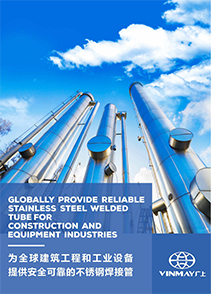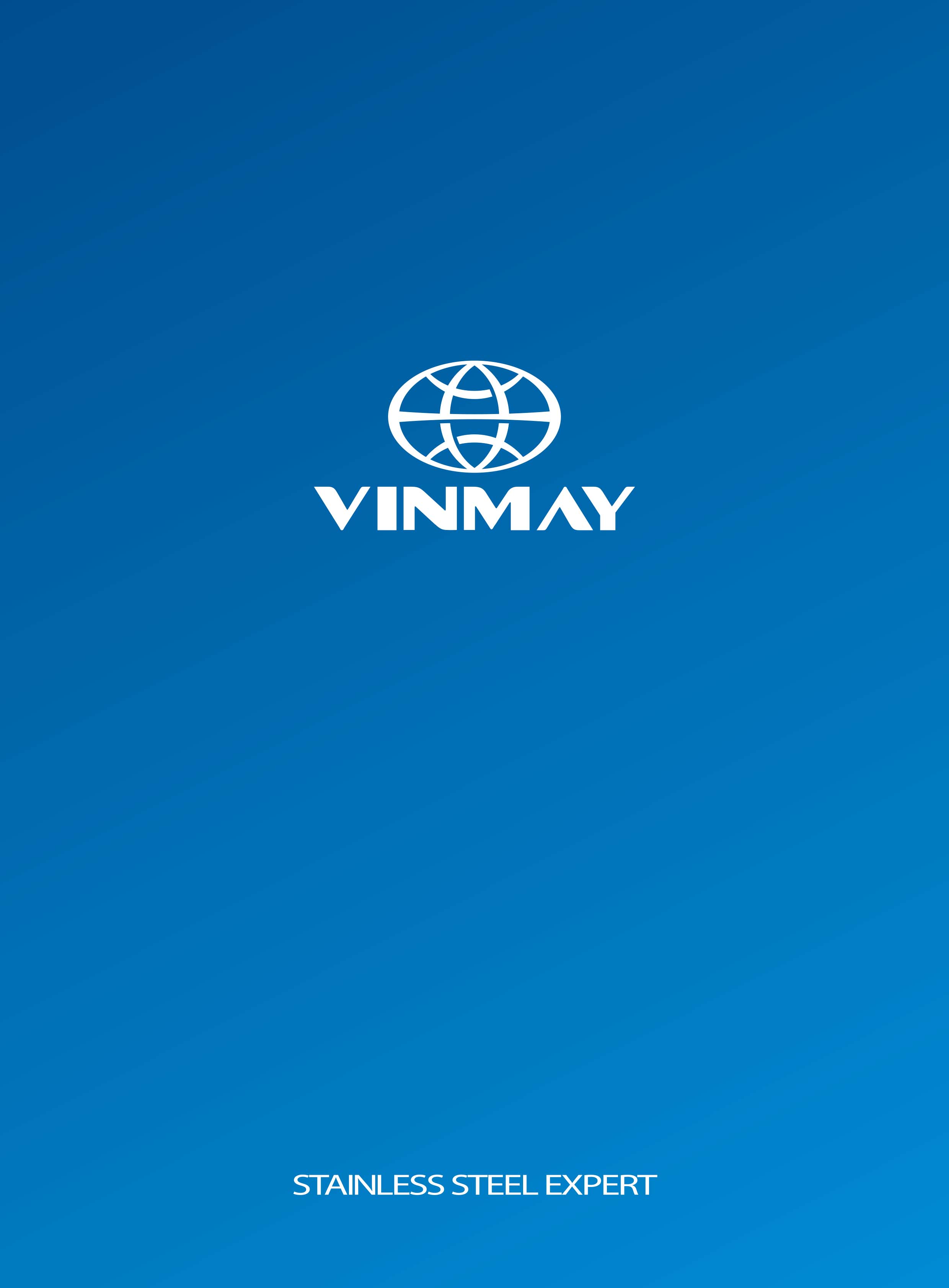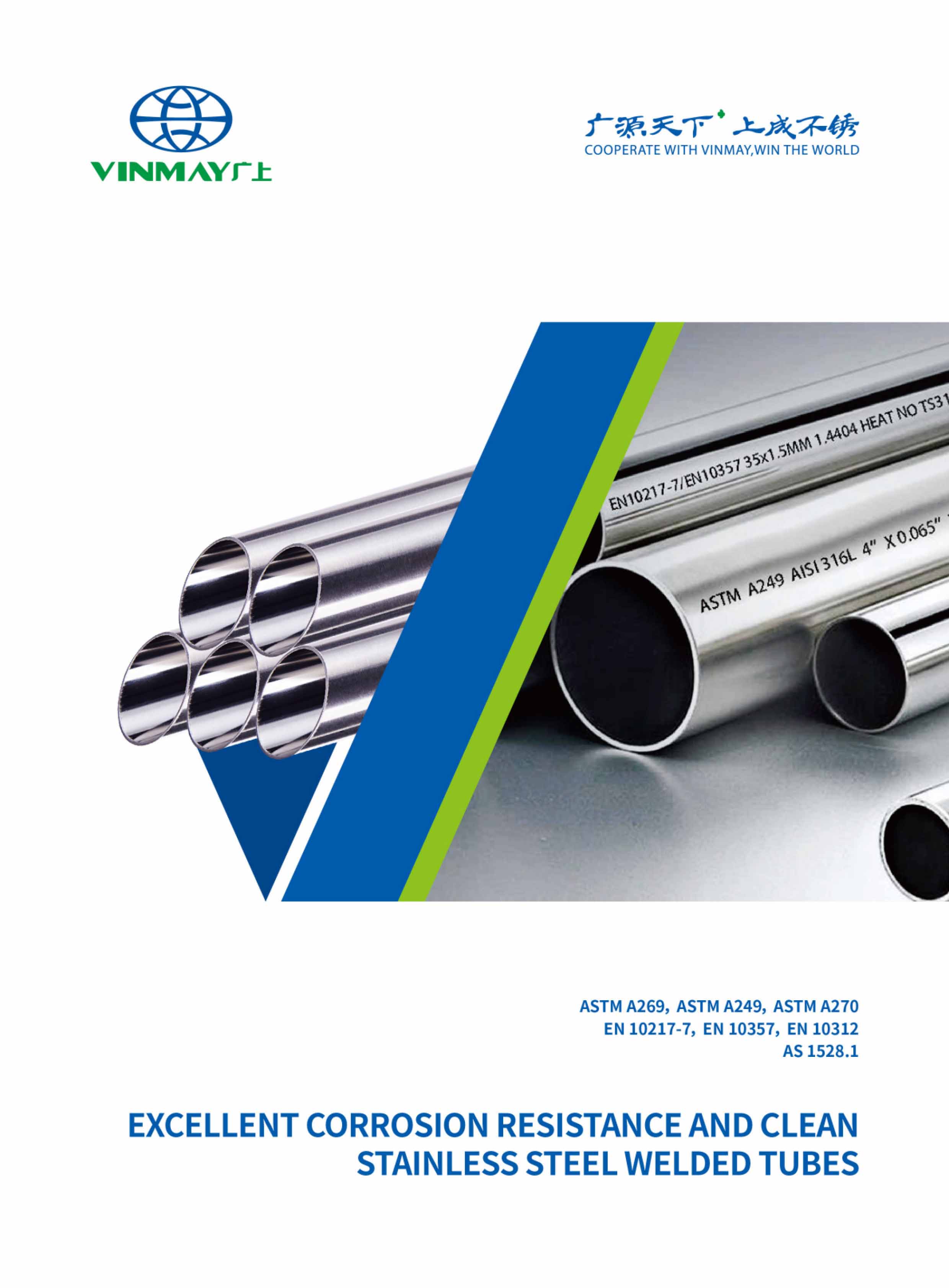Stainless steel welded tubes are crucial in various industries due to their superior corrosion resistance and robustness. Fabricated from high-quality stainless steel strips fused via TIG or laser welding, these tubes undergo heat treatment for stress relief. Common grades include 304 for general corrosion resistance, 316 for chloride-rich environments, and 321 for enhanced mechanical strength. Dimensions range from 6mm to 250mm in outer diameter and 0.5mm to 6mm in wall thickness. These tubes comply with standards such as ASTM A249, ensuring high quality and performance. For more insights into their manufacturing and applications, a deeper exploration is beneficial.
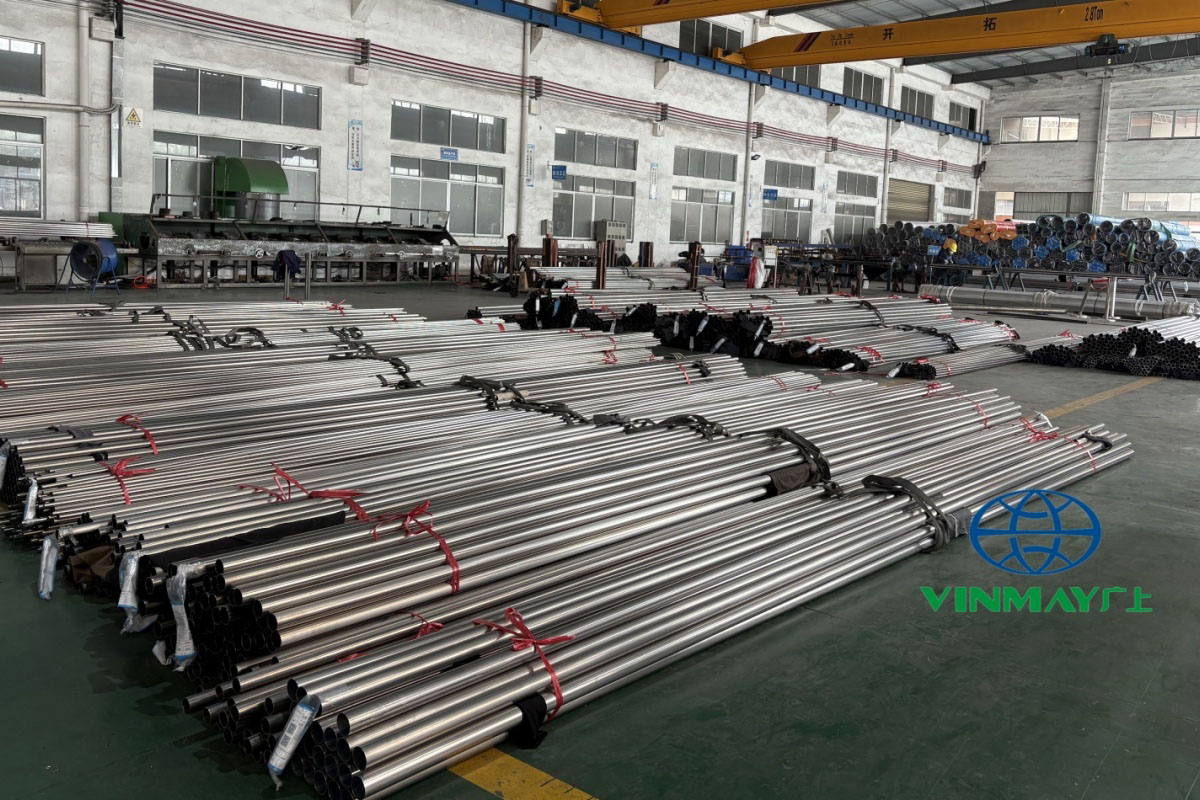
A stainless steel fused tube is a cylindrical element formed by fusing together edges of stainless steel strips or sheets, resulting in a durable and corrosion-resistant conduit used extensively in various industrial applications. The welding methods utilized in its production process are crucial to achieving the desired structural integrity and high strength. Methods such as TIG (Tungsten Inert Gas) welding and laser welding are often utilized to ensure precise and robust joints.
Corrosion resistance is a paramount characteristic of stainless steel fused tubes, making them ideal for environments where exposure to moisture, chemicals, and extreme temperatures is common. The chromium content in stainless steel forms a passive oxide layer, which greatly enhances its resistance to corrosion.
The production process of these tubes involves not only welding but also subsequent treatments like annealing and pickling to relieve stresses and remove any contaminants. This guarantees that the tubes maintain their structural integrity and perform at their best under high-stress conditions.
In essence, stainless steel fused tubes combine advanced welding methods and meticulous production processes to produce components that meet strict industry standards for strength, durability, and resistance to corrosive elements.
Creating stainless steel welded tubes involves a meticulous series of steps, starting with selecting high-quality stainless steel strips or sheets and culminating in advanced welding methods such as TIG or laser welding to achieve peak joint integrity.
The initial phase, material selection, ensures that only top-grade stainless steels, known for their corrosion resistance and mechanical properties, are utilized.
Subsequently, the tube-forming process begins, where the stainless steel strips are precisely shaped into various forms, such as square, round, rectangular, slot, and oval, using a series of forming rolls. This shaping must be exact to maintain the tube's dimensional accuracy and structural integrity.
Following forming, the welding process is initiated. Techniques such as Tungsten Inert Gas (TIG) or laser welding are employed to fuse the tube's edges seamlessly, guaranteeing a robust and consistent weld bead. For a detailed guide on these techniques, you can refer to the stainless steel pipe welding procedure specification.
Once welded, the tubes undergo heat treatment to relieve residual stresses and enhance their mechanical properties, a critical step in maintaining the tube's performance under various conditions.

Given the diverse applications and specific requirements of stainless steel welded tubes, selecting the appropriate stainless steel grade is essential to ensure the best performance and longevity. Among the common stainless steel grades, Type 304 is frequently chosen due to its exceptional corrosion resistance, balanced material properties, and proven durability. Type 316 offers superior corrosion resistance in chloride environments, making it ideal for marine applications.
For applications requiring higher mechanical properties, Type 321, stabilized with titanium, provides excellent strength and resistance to intergranular corrosion after welding. Meanwhile, Type 409 is often utilized in automotive exhaust systems due to its favorable balance of heat resistance and cost-effectiveness.
The choice of grade also impacts welding techniques and heat treatment processes. For instance, Type 304 and Type 316 are typically welded using TIG (Tungsten Inert Gas) or MIG (Metal Inert Gas) methods, followed by post-weld heat treatment to restore corrosion resistance.
Conversely, ferritic grades like Type 409 usually require preheating and controlled cooling to maintain their mechanical properties.
Related Articles:
Stainless steel welded tubes are available in a wide range of sizes and dimensions to cater to the specific requirements of various industrial applications. The precise selection of size variations is essential to guarantee optimal performance and compatibility with existing systems. The manufacturing process of these tubes involves welding and subsequent treatments to enhance their structural integrity and corrosion resistance.
The dimensions of stainless steel welded tubes can be customized to meet specific project needs. Custom fabrication allows engineers to specify exact measurements, guaranteeing seamless integration and superior functionality. To assist in understanding the common size variations, consider the following examples:
Stainless steel welded tubes exhibit superior corrosion resistance, making them ideal for harsh environments. Ensuring adherence to industry standards is vital in maintaining consistent quality and performance across all applications.
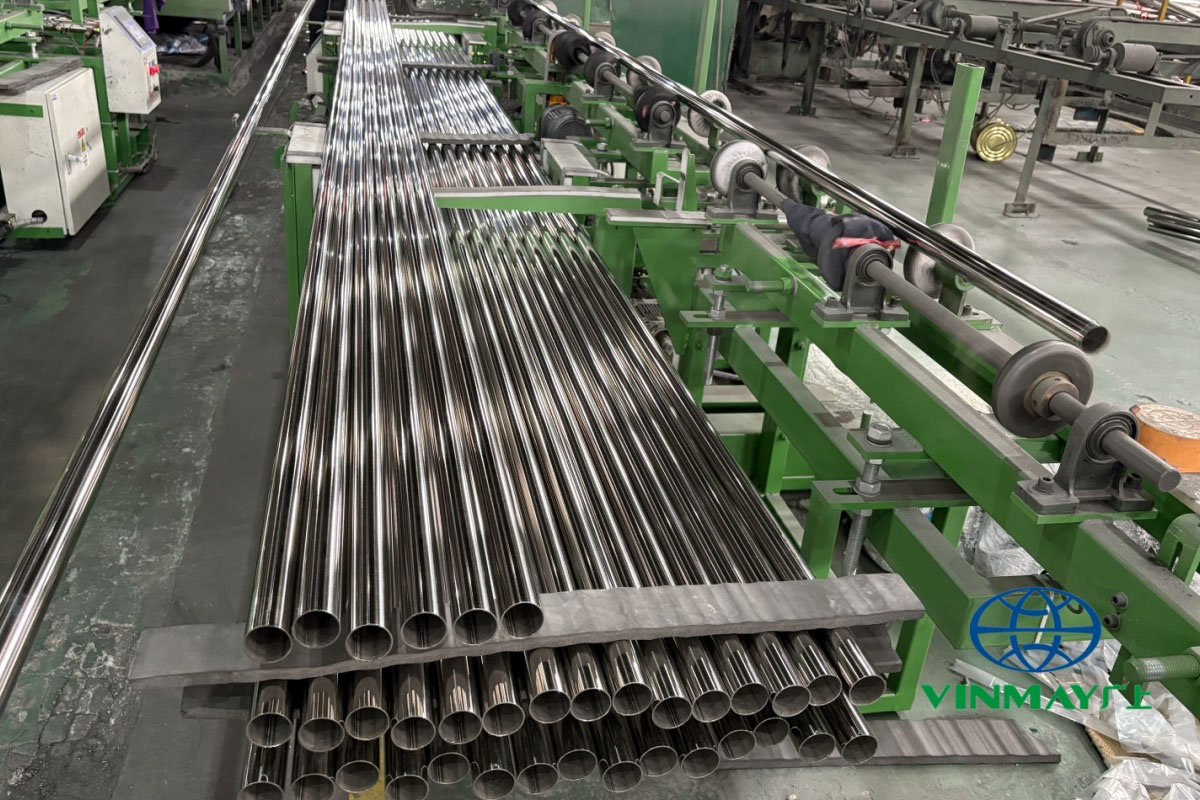
Adhering to industry standards such as ASTM A249, A269, and A270 is necessary for guaranteeing the quality, durability, and performance of stainless steel welded tubes across various applications. These stainless steel pipe welding standards provide detailed guidelines on material composition, dimensional tolerances, and mechanical properties, thereby ensuring conformity and reliability.
Material composition is an important aspect governed by these standards; it guarantees the appropriate alloying elements are present to enhance corrosion resistance and mechanical strength. For instance, the inclusion of chromium and nickel in specified proportions is essential for superior corrosion resistance, particularly in harsh environments.
Welding techniques, as specified in these standards, also play a significant role. The prescribed methods, such as TIG (Tungsten Inert Gas) and laser welding, ensure the integrity of the weld seam, which is vital for maintaining the tube's structural integrity and preventing defects.
Quality control measures, including non-destructive testing (NDT) and hydrostatic testing, are mandated to detect any anomalies or weaknesses. These tests ensure that the welded tubes meet the stringent criteria set forth in the standards, thereby providing assurance of their performance and longevity in various industrial applications.
Surface finishes for stainless steel welded tubes are crucial for enhancing aesthetic appeal, corrosion resistance, and hygiene, especially in applications requiring stringent sanitation standards. Implementing appropriate surface protection techniques is necessary to achieve these objectives.
Through these advanced techniques, stainless steel welded tubes achieve superior performance and reliability.
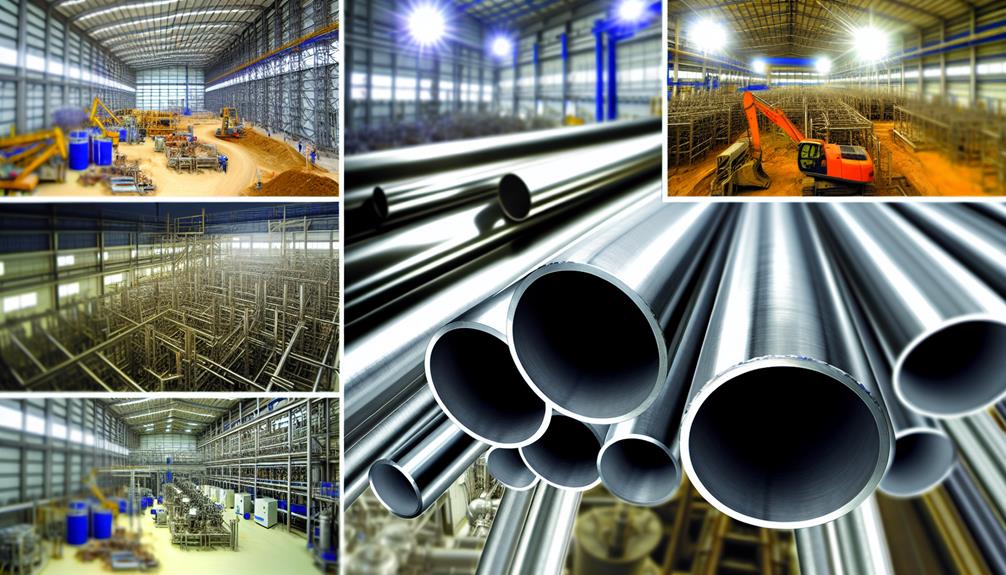
The diverse applications of stainless steel welded tubes span across various industries, owing to their exceptional durability, corrosion resistance, and hygienic properties.
In industrial piping, these tubes are integral for transporting fluids and gases, particularly in environments that require high resistance to corrosion and extreme temperatures. Stainless steel's robustness guarantees long-term reliability and minimal maintenance. For example, light gauge stainless steel water tubes are widely used in plumbing systems due to their corrosion resistance and durability.
Structural applications benefit from the material's high tensile strength and resistance to environmental factors. These attributes make stainless steel welded tubes ideal for constructing bridges, buildings, and other infrastructure requiring load-bearing capacity and longevity. Additionally, architectural stainless steel tubes are commonly employed in building facades and other design elements.
In the automotive sector, the tubes are utilized for exhaust systems, fuel lines, and structural components, where their corrosion resistance and strength-to-weight ratio enhance vehicle performance and safety.
For decorative uses, stainless steel welded tubes offer aesthetic appeal combined with durability. They are commonly employed in architectural elements, furniture, and fixtures, where visual allure and minimal maintenance are desired.
In the aerospace industry, the stringent requirements for weight reduction and material performance make stainless steel welded tubes suitable for hydraulic systems, fuel lines, and structural components. Their ability to withstand high-stress conditions and resist corrosion is crucial in aerospace applications. Moreover, stainless steel tubes for heat exchangers are essential in thermal management systems due to their excellent thermal conductivity and resistance to corrosion.
For sanitary applications, stainless steel sanitary tubes are ideal due to their stringent hygiene standards. These tubes are essential in the food and beverage, pharmaceutical, and healthcare industries, ensuring a high level of cleanliness and corrosion resistance.
For those looking to find reliable suppliers or wholesale options, the top 60 stainless steel tubing manufacturers is an excellent resource. This list includes reputable sources for both bulk purchases and specialized applications, ensuring access to high-quality materials at competitive prices.
Related Articles:
To guarantee the durability and peak performance of stainless steel welded tubes, implementing a strict maintenance and care regimen is vital. Effective maintenance encompasses various cleaning methods, preventive maintenance strategies, and meticulous inspection procedures, securing the integrity and functionality of these tubes across diverse applications.
Proper handling precautions and adherence to storage guidelines further optimize the lifespan and performance of stainless steel welded tubes, ensuring they meet industry standards and operational demands.
Read Also: Essential Maintenance Tips for Stainless Steel Square Tubing
Imagine an architect sculpting a masterpiece: using welded tubes guarantees cost savings and durability, unparalleled strength and versatility, superior design flexibility, increased efficiency, exceptional impact resistance, enhanced aesthetics, diverse fabrication options, and rigorous quality control.
Recommended: Stainless Steel Tube Welded Vs. Seamless
Yes, customization options for welded tubes provide exceptional versatility and design flexibility. Using advanced fabrication techniques, these tubes can be tailored to meet specialized applications, offering precise control over dimensions, shapes, and material properties.
Proper welding techniques are essential, as welding can reduce corrosion resistance by up to 50%. Addressing welding challenges, such as ensuring high welding quality and best surface finish, is necessary for effective corrosion prevention in stainless steel tubes.
The environmental impact of manufacturing processes includes energy consumption and emissions control. Sustainability efforts, such as recycling options and green initiatives, are vital. Effective waste management and pollution prevention strategies enhance eco-friendly practices in the industry.
The lead times can be extraordinarily variable, spanning from a few weeks to several months, influenced by the intricacies of manufacturing processes at the stainless steel tube factory, rigorous quality control measures, complex supply chain logistics, material specifications, and stringent industry standards.
Stainless steel welded tubes are indispensable across numerous industries due to their durability, resistance to corrosion, and versatility. The most commonly used grades, such as 304 and 316, offer varying benefits tailored to specific applications.
Importantly, the global stainless steel market reached 50.7 million metric tons in 2020, underscoring the material's significance.
Proper maintenance, including regular cleaning and inspection, prolongs the life and performance of these tubes, thereby optimizing their long-term industrial utility.
For high-quality stainless steel welded tubes, Vinmay is a leading stainless steel welded tube manufacturer. For inquiries or to discuss your requirements, please contact us today. We are here to assist with any questions and provide the solutions you need for your projects.
